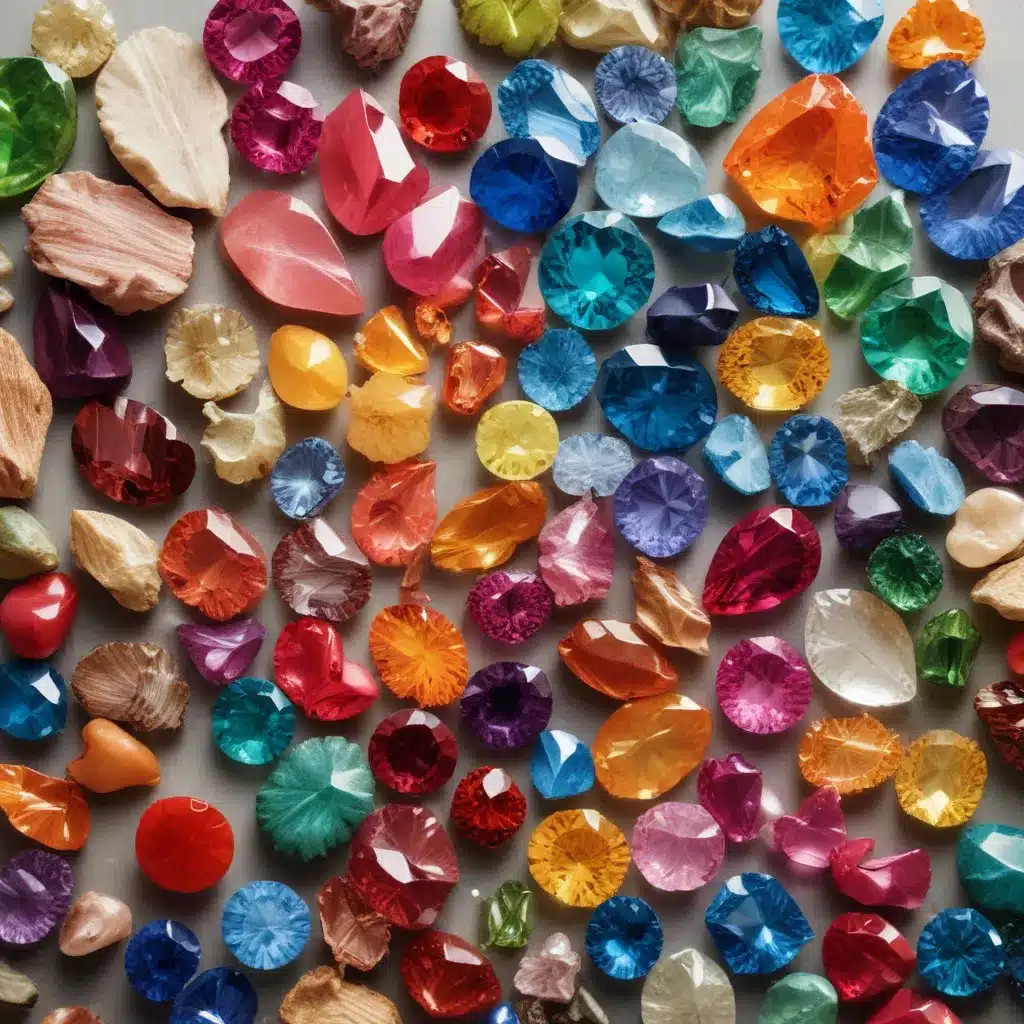
As a gem and jewelry expert at Shelby Gem Factory, I’m thrilled to dive into the captivating world of colored gemstones. From the fiery hues of rubies to the ethereal blues of sapphires, the natural world has blessed us with a vibrant palette of gemstone varieties, each with its own unique story and allure.
Gemstone Varieties
Gems can be broadly categorized into two main groups: precious gems and semi-precious gems. Precious gems, such as diamonds, rubies, emeralds, and sapphires, are the rarest and most valuable. These gems are prized for their exceptional hardness, durability, and brilliance. On the other hand, semi-precious gems, like amethyst, citrine, topaz, and tourmaline, are more abundant and generally less expensive, but no less captivating in their own right.
The diversity of gemstones is a true testament to the incredible geological processes that shape our planet. From the fiery depths of volcanic activity to the patient accumulation of sedimentary deposits, the mineral compositions that give rise to these gems are as varied as the colors they display.
Gemstone Properties
One of the most striking features of colored gemstones is their ability to captivate the eye with their vibrant hues. This color variation is a result of the unique chemical composition and atomic structure of each gem. For example, the rich red of a ruby is caused by the presence of chromium, while the deep blue of a sapphire is due to the inclusion of iron and titanium.
Beyond color, gemstones also differ in their physical properties, such as hardness and durability. The Mohs hardness scale, which ranges from 1 to 10, helps us gauge a gem’s resistance to scratching and wear. Diamonds, the hardest known natural material, sit at the top of the scale, while softer gems like emeralds and opals require more careful handling.
The refractive index of a gemstone, which measures how much the speed of light slows down as it passes through the material, also plays a crucial role in the gem’s optical properties. This index, coupled with a gem’s dispersion (the ability to separate white light into its constituent colors), determines the brilliance, fire, and scintillation that captivates the eye.
Geological Origins
Gemstones are the result of remarkable geological processes that have unfolded over millions of years. Some gems, like rubies and sapphires, are formed deep within the Earth’s mantle, where intense heat and pressure transform the raw materials into the precious stones we know and love.
Other gems, such as amethyst and citrine, are the product of volcanic activity, where molten rock cools and crystallizes into stunning quartz varieties. Sedimentary deposits, formed by the gradual accumulation of minerals and organic matter over time, also give rise to gems like pearls and opals.
In some cases, the transformation of one gem into another can occur through metamorphic processes, where extreme heat and pressure alter the mineral composition. This is the case with the striking color change seen in some varieties of sapphire, which can shift from blue to pink or purple depending on the specific conditions under which they were formed.
Gemstone Applications
The allure of colored gems extends far beyond their use in fine jewelry. These natural wonders have found a wide range of applications, from the intricate designs of high-end jewelry to the practical applications in industrial settings.
In the world of jewelry, colored gemstones offer endless possibilities for creative expression. Skilled designers and craftspeople utilize the unique properties of each gem to create captivating pieces that showcase their natural beauty. Whether it’s the bold contrast of a ruby and diamond ring or the serene elegance of a sapphire and pearl necklace, these gems have the power to elevate any jewelry design.
Beyond adornment, colored gems also play a vital role in various industrial and technological applications. The hardness and durability of gems like diamond and corundum (the mineral responsible for rubies and sapphires) make them essential for precision cutting and polishing tools. The optical properties of gems, such as their ability to refract and disperse light, have also found use in the production of specialized lenses and prisms.
In the realm of decorative arts, colored gemstones have long been revered for their ability to captivate the senses. From the vibrant hues of stained-glass windows to the intricate mosaics adorning grand architectural structures, these gems have the power to transform ordinary spaces into extraordinary visual experiences.
Birthstones and Gem Care
Colored gemstones have also become deeply ingrained in our cultural traditions, with each month of the year associated with a particular birthstone. These gems, from the fiery opals of October to the cool blue topaz of December, are believed to possess unique qualities that resonate with the individual characteristics of those born in that month.
Proper care and maintenance are essential to preserving the beauty and longevity of colored gemstones. Factors like hardness, chemical composition, and susceptibility to damage all play a role in determining the best practices for cleaning and storing these precious natural wonders. Consulting with a knowledgeable jeweler or gemologist can help ensure that your cherished gems remain in pristine condition for years to come.
As I reflect on the boundless wonder of the natural world, I’m continually amazed by the diversity and brilliance of colored gemstones. From the fiery depths of the Earth’s mantle to the delicate artistry of high-end jewelry, these gems have the power to captivate, enchant, and inspire. By understanding their geological origins, unique properties, and myriad applications, we can truly appreciate the captivating palette that nature has bestowed upon us. So, whether you’re a seasoned collector or a budding gem enthusiast, I invite you to explore the vibrant world of colored gems and let your creativity be ignited by the splendor of nature’s artistic masterpieces.

